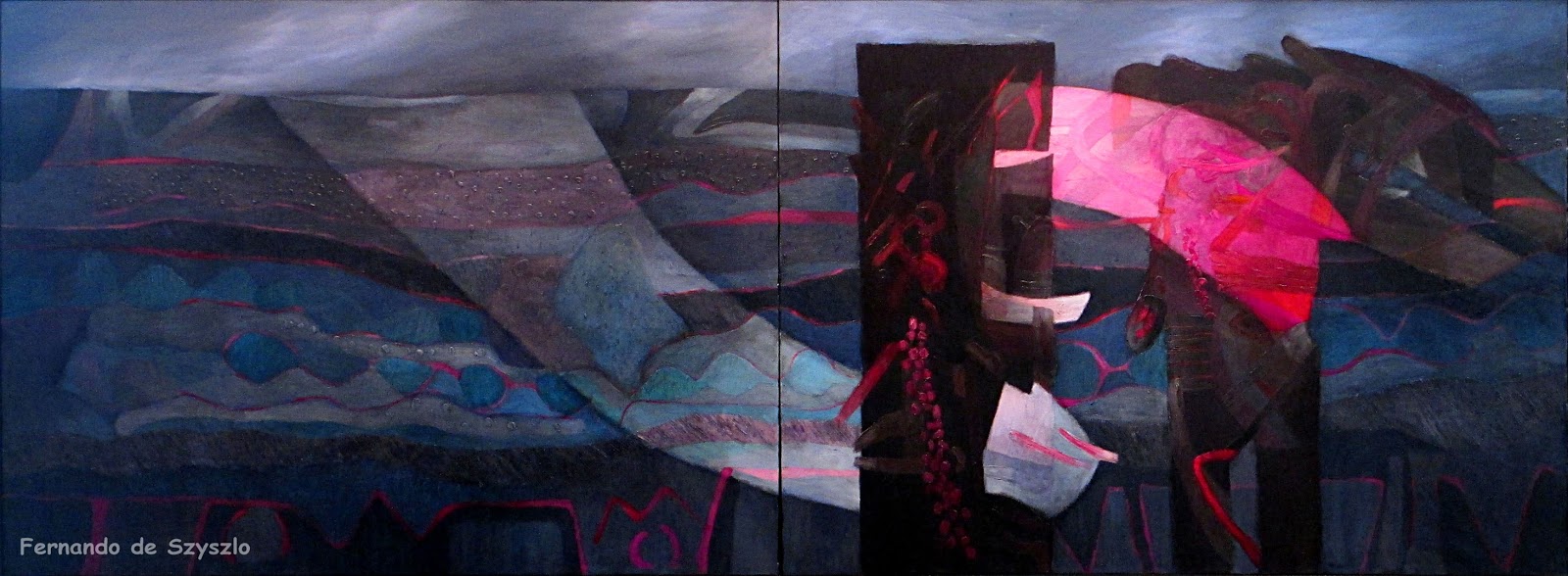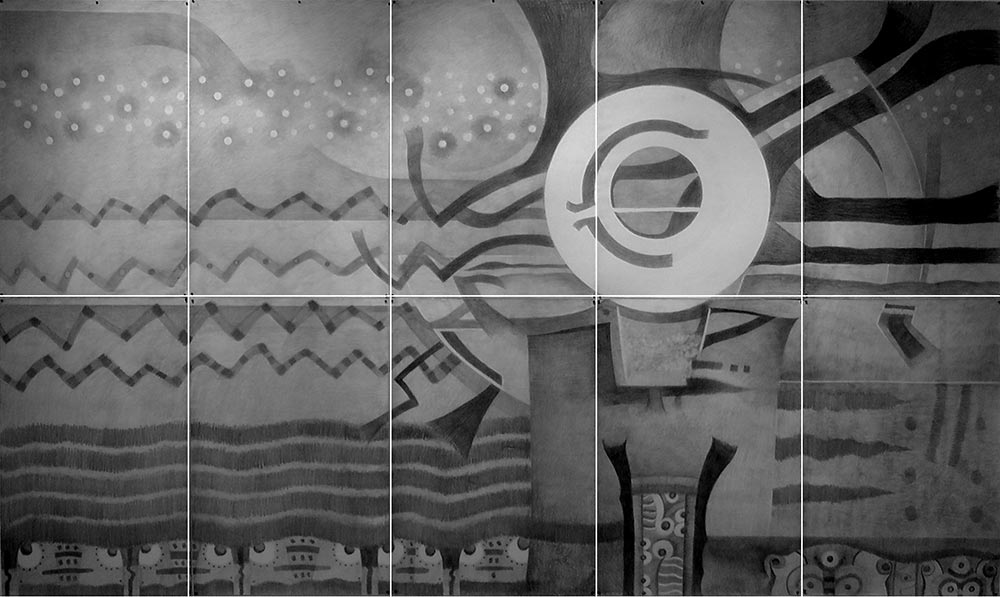I have come across readings that the origin of an artwork can be said to rest in a series of decisions made by the artist. These decisions are related to the field of interest which are the cultural antecedents from which the artist comes. This materialization of ideas, dreams, emotions, feelings is a personal artistic expression; it is not a magical or divine mystery; it has evolved from the creator’s personal experience
The picture in an artwork needs a pictorial balance that is indispensable; this balance could be physical (in cases of 3D work) or visual (in cases of 2D work). It is the state of distribution in which all sections , parts , actions come to a standstill fusing themselves to create a new picture. The elements in my personal mark making (drawings) work separately. Their spatial relationship within the whole is part of what the viewer is seeing. Such cognitive observations are an indispensable aspect of common experience. I perceive objected, shapes, forms as having a certain size while they are arranged next to each other; I look for a spontaneous and informal exploration of these elements without a set of rules or pre-stablished compositional parameters. As Rudolf Arheim stated, “perceptual inductions” are sometimes interpolation based on previously acquired knowledge. (Art and Visual Perception a Psychology of the Creative Eye, University of California Press 1974, pp 12)

Unbalanced composition which looks accidental and transitory will show ambiguous patterns allowing no decision on which of the possible configuration that the artists are sensitive to when they arrange the pictorial object in a painting or the elements in a piece of sculpture (Arheim 1974, p.13). Balance does not mean or require symmetry within the work of art what is more important is the weight and direction that the picture creates by all of the elements working together, for example, the use of a circle within a square/rectangular format as seen in many of my working drawings. The visual weight or direction of the element may be influenced by the location of it within the format—for example, the circle in the upper bottom of right/left section of the format. The visual weight draws its the strength from the gravitational force and is emphasized by the size as well as the spatial depth.
The distribution of weight may be dominated by one strong element to which everything else is subservient in a hierarchically gradient approaching the distribution of balance
Mark making (drawing) are timeless expressions in relation to the moment that it was created and by the fact that the work remains to present day. Eliminating time form the drawing, we have to surrender our awareness in order to possess the work of art as it is perceived, looking for an understanding of what we see.

Another element to discuss is the definition of line within the mark making (drawing) process. Euclid defined the line (straight or curved) as to be “Breathless length, with a straight line being a line which lies evenly with the points of itself”; Klee and Kandinsky described it as a simple point dragged across a page; the line is a trace of the artist, a spatial index or graph of a temporal event.
Looking into the term…temporal even…refers to “time”; to define and measure this term would be as the interval of time takes to make the work of art or by the intrinsic definition of it.
Describing the notion of time is part of the fundamental structure of the universe, a dimension in which events occur in sequence and time itself is something that can be measured. In contrast to this view is that time is part of the fundamental intellectual structure (together with space and number); within this structure, human sequence events, quantify the duration of events and the intervals between them and compare the motion of objects
And early description of time was expressed by St. Augustine in his autobiographical Confession Book XI that raised the question: When we say that an event or interval of time is short or long what is it that is being described as short or long duration? The answer to his riddle is that what we are measuring is the duration of an event or interval of time in the memory. Having the understanding of the temporal duration of present and the future happens in the mind. This perception of temporal duration is crucially bound to our memory
Some of my drawings have a mystical connection and experience that invite the viewer into a silent internal dialogue within the elements as object, form, shape searching for its special qualities, seeing it as if nothing else exists at that moment. This visual language is not universal, it responds to different context of social, historical, psychological environment
Subjectivity is visceral in any interpretation of an aesthetic object. The fundamental mechanism that drawing communicates is thought, feeling, and emotion. It also communicates signification and message. Images are marred into the surface of the paper, they are loose in a way to unfold unforeseen new patterns and imperfection marks that blemish the surface.
We need to commit ourselves in order to be able to understand the medium or vehicle used as well as the surface where the artist draws—the possible limitation that the material may produce and the strength and weakness of the medium whether dry or wet.
The space or spatial atmosphere, the illusion of the picture plane, depth and shallow space are considered as two-dimensional. Spatial perception is mentally considered by the environment and the experience of the viewer. The sense of sight is experienced through the eye but interpreted by the brain as a response of a visual stimulus. Eye focusing attention shifts constantly so it can adjust permanently, having two types of vision; the kinesthetic which organizes the part into a whole as well as the surfaces in order to recognize them. The stereoscopic refers to the overlapping of these two views into one image; therefore we can see the three-dimensional form making it possible to judge the distance. Drawing and rendering principles are used to introduce the illusion of realism into a two-dimensional representation or picture plane of the three-dimensional object. The object is seen as a complex image to which perspective, light, shade, shadow, values and atmosphere effect texture that must contribute to it.

The action of rendering in a drawing has to be accurate as it communicates space, form and shape as well as light.
An important reason for what drawing means was made by Carl Jung — making a distinction between two basic personalities types or what he calls basic attitudes. In his system of classification he used the key term extraversion and introversion. He believed that the psychic energy of the extravert is channeled toward the objective external world—thought and feeling about objects, people, animals and the other environmental circumstances and conditions. On the other hand, the introvert explores and analyzes his inner world being withdraw and preoccupied by his internal affairs (Mahnke, Frank H. 1947-Color Environmental & Human Response. John Wiley & Son Inc, pp 2.8) This relationship is in reference to our own understanding and expression of the outer world transported to a surface like a piece of paper.
Drawing provides a graphic and emotional means to generate information that is depicted through the mark making; it also works as incubation for new ideas, new problem solving, new data and insights. There are great differences between how we see and what we see. How we see is a psychological effect on us. It is our own capacity to sum up all aspects of our knowledge including those which lie deep in the human subconscious, memory, and flash back ideas which add to the visual field and help the artist to revel the inner truth of the object.

